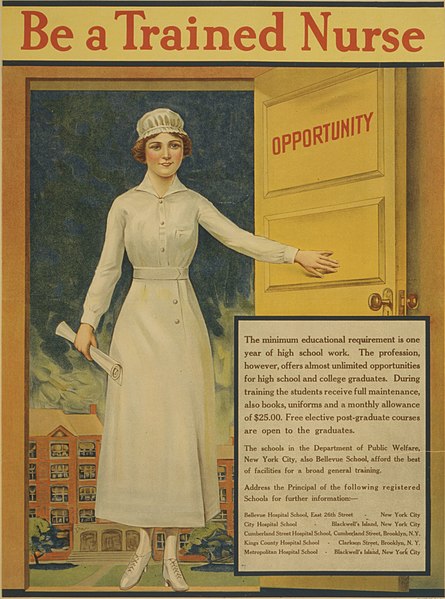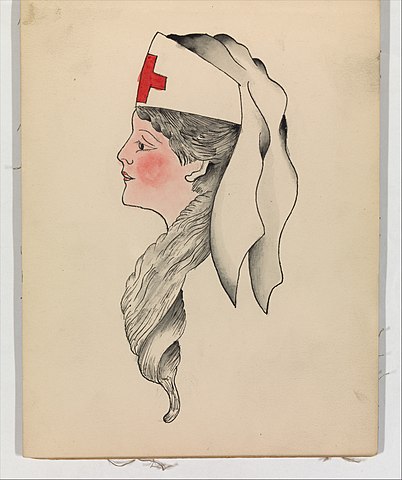
Thammasat University students interested in the allied health sciences, sociology, gender studies, economics, and related subjects may find a new book useful.
Innovative Nursing Care: Education and Research is an Open Access book available for free download at this link:
https://www.degruyter.com/document/doi/10.1515/9783110786088/html
It is edited by Dr. Klavdija Čuček Trifkovič, Vice-dean for educational activities at the University of Maribor Faculty of Health Sciences, Slovenia.
The Thammasat University Library collection includes several books about different aspects of
According to the website of the Royal College of Nursing, the United Kingdom:
Innovation in nursing
- It is important for nurses to share their innovations
- Nurses are motivated to engage in innovative practices primarily because they seek to improve patient experiences, health outcomes and nursing practice.
There are multiple interpretations of the meaning of innovation. Here at the RCN we have adopted this definition by West and Farr (1990) to frame our understanding of all that we want to support and celebrate in nursing.
Here we understand innovation to be about purposeful change – change to realise clearly defined benefit(s). It doesn’t have to be “brand new”, but it is new within a specific context. It can be about the design and development of a new product or service but it can also be about the modification of an existing product or the redesign of an existing service. The novelty factor of an innovation does not necessary equate with its impact.

The University of Phoenix, Arizona, adds about nursing innovations:
Why nursing is primed for innovation
If nursing has a type, it’s a no-nonsense personality with a strong independent streak. Nursing is focused on a patient’s mental, physical and psychosocial well-being. Innovation is needed to improve the quality of patient care and deliver healthcare outcomes in an efficient, practical and cost-effective way.
“We don’t have time to think about things as much or research them or mull them over. You have patients, and they need your care.”
Hancock’s position stems from her work in academia: In addition to working as a nursing professor in West Virginia, she is also an editor of the online research journal The Qualitative Report.
In these roles, she sees a strong difference between the way academia and nursing approach issues. Where academia has the luxury of analyzing and discussing concepts or problems, nursing is focused on solutions.
“Nurses are used to doing more with less,” Hancock says.
From her observations, they’ll fix equipment themselves if at all possible. They’ll barter with other units for supplies or resources. They know how to work with all types of people, from physicians to patients.
“With that you become very creative in how you approach people, how you approach the care of your patients and your team,” Hancock explains. […]
Practical innovations
Thanks to technology, virtualization is positively impacting nursing on multiple levels. Martinez points to technologically advanced cameras that afford virtual access to a given patient’s condition. These cameras are installed in select patient rooms so that caregivers can examine a patient virtually.
“They can actually measure the pupils of the eyes of the patient from the camera,” she marvels. These virtual tools augment the ability to assess and support the local team on the ground with clinical decision-making.
Hancock points to less futuristic but equally impactful technology: telemedicine. It took off with the advent of the pandemic’s social distancing protocols, she says, but it’s ideal for less densely populated regions. […]
Need for future innovation?
The future is what largely drives innovation. The next crisis, pandemic or health concern — they are what motivate the innovators of today to keep imagining possibilities.
“We’re still evolving,” Martinez says. “We’re working with our data analytics team to automate some of our information to see how we can merge some of our data collection that would benefit other teams.”
This merging of data can help enable systems to integrate. For example, pharmacists can connect their electronic records with those of nurses, physical therapists and physicians to streamline data collection and analysis (as opposed to each specialist maintaining records on separate platforms). The question that propels them is always one of improvement. How can they improve patient outcomes? […]
Frequently asked questions
- Why is innovation important in nursing?
As evidenced by the COVID-19 pandemic, new approaches to patient care are vital. Nurse innovators had to not only optimize and sometimes pivot in their workflow, but they also had to explore and implement new treatments and protocols.
Outside of such extenuating circumstances as a pandemic, nursing innovation can result in numerous benefits, including education, disease prevention and decreased patient mortality.
- How can nurses be innovators?
Martinez advocates for what she calls a “speaking-up culture” in healthcare, which empowers nurses to surface issues when they begin to percolate, suggest solutions, contribute to research and innovate.
Nurses can also innovate in practice, such as by rethinking traditional care practices. Hancock, for example, recalls how clustering care — when nurses carry out several tasks with a patient at one time instead of exiting and reentering the room multiple times — used to be the norm before it fell out of favor and then was resurrected as a best practice during the COVID-19 pandemic.
- What are some benefits of innovative nurse leadership?
When nurse leaders are innovative, it creates a synergy between management and practice that, theoretically, can improve patient care and outcomes in clinical settings.

An introduction to the book notes:
People are living longer than ever before which may be partly ascribed to improved healthcare literacy. However, increasing lifespan also increases the complexity of nursing and general health care problems. This makes providing optimal nursing care even more challenging and increases the significance of nurses’ education. Insufficient education and knowledge can lead to errors in nursing care; therefore, improving knowledge is vital for delivering quality nursing care. Education and awareness of best nursing practice care delivery include devotion to being a professional, being up to date, striving to improve, and ultimately providing the finest nursing care to people, families, and communities. Research assists nurses in determining best practice and enhancing nursing care. Additionally, nursing research assists in adapting to changes in the present healthcare environment, patient demographics, and legal requirements. As researchers uncover new findings, the nursing practice continues to evolve. This book aims to contribute to creative nursing care in the larger field of nursing and will thus be valuable to nurses and nursing students in a variety of nursing specialties. It is structured into the following three sections: Clinical nursing; Holistic nursing care; and Education in nursing.

(All images courtesy of Wikimedia Commons)
